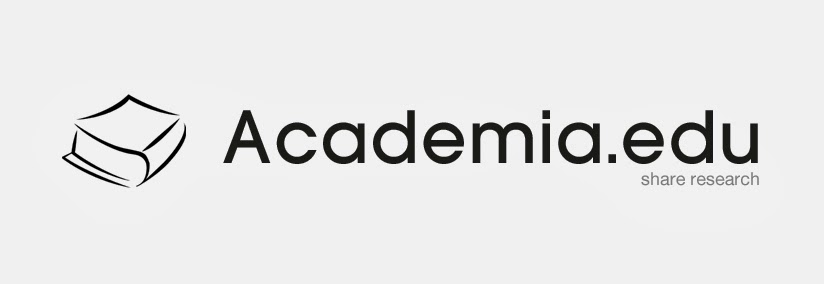The Role of Information and Communication Technology on Service Trade : Case Study of Indonesia's Export to ASEAN Countries
Abstract
This study aims to analyze the impact of Information and Communication Technology (ICT) on bilateral trade in service between Indonesia and its ASEAN trading partners. The sample is bilateral export in service between Indonesia and 9 ASEAN countries such as Malaysia, Philippines, Singapore, Thailand, Brunei Darussalam, Vietnam, Myanmar, Laos and Cambodia. The total trade in service data is based on UN-Comtrade. It consists of service products that are coded in Standard International Trade Classification (SITC). This study uses the gravity model framework of data panel from 2005 to 2017 with random effect model is analyzed using Generalized Least Square. Based on the regression analysis, results show that sub-index of ICT Development Index (IDI) such as mobile-cellular telephone subscriptions per 100 inhabitants which represents technology development, has a positive and significant impact on Indonesia’s service export to ASEAN countries. Other variables such as GDP and distance also have significant effect on Indonesia’s export in service. GDP reporter, GDP partners and common language have positive and significant effect on Indonesia’s export in service. Furthermore, distance has a negative and significant effect on Indonesia’s export in service. These results are in line with Gravity model theory. In addition, these results are expected to be strong enough for the specifications of alternative models and estimation methods. Based on these results, some expected trade policy recommendation related to trade in service and telecommunication particularly trade between Indonesia and ASEAN countries can be formulated. For instance, to strengthen Indonesia’s networking and infrastructure of telecommunication in ASEAN countries. To build more Base Transceiver Station (BTS) located in trading partners in ASEAN. Telin Singapore established by Telkom Indonesia is officially established in 2007 and is the first Telkom footprint in international business. Since Singapore is Indonesia’s trading partner which has the highest of ICT Development Index among other ASEAN countries, the Indonesian government need to continue the implementation of Information and Communication Joint Committee Indonesia-Singapore.
Keywords
Full Text:
PDFReferences
Amador dan Cabral. 2008. The Portuguese Export Performance in Petspetive: A Constant Market Share Analysis.
Anderson. J. E. (2016). The Gravity Model of Economic Interaction. Boston College. Association of Southeast Asian Nations. https://asean.org/asean/about-asean/. Retrieved on 2 April 2019.
Baltagi, B. H., (2005). Econometric Analysis of Panel Data. 3rd Ed. West Sussex: John Wiley and Sons Ltd.
Besedes dan Byle. (2010). An Analysis of Export Duration in Latin America.
Distancefromto (2019). Jarak Indonesia dengan Negara-negara ASEAN. Retrieved from www.distancefromto.net
Elshehawy et al. (2014). The Factors Affecting Egypt’s Export: Evidence from the Gravity Model Analysis.
Ekanda (2014) Ekonomi Internasional. Jakarta: Erlangga.
Garín-Muñoz, T. and Amaral, T.P. (2000). An Econometric Model for International Tourism Flows to Spain. Applied
Economics Letters, 7(8), pp.525-529.
Ginting (2013) ‘Pengaruh Nilai tukar terhadap Ekspor Indonesia’ P3DI. Jakarta.
IDI (2019). ICT Development Index Categorization. Retrieved from www.itu.int.
Jayadi, A. (2016). Peta Persaingan Produk Ekspor Indonesia, Malaysia, Singapura Dan Thailand.
Ketenci, N. and Uz, I. (2010). Trade in services: The elasticity approach for the case of Turkey.
MPRA Paper No. 86596. https://mpra.ub.uni-muenchen.de/86596/. Retrieved on 10 August 2019.
Kimura, F., & Lee, H. H. (2006). The Gravity Equation in International Trade in Services. Review of World Economics, 142(1), 92-121.
Lidya (2012). Analisis Faktor-faktor yaang Mempengaruhi Ekspor Indonesia Tahun 1988-2008.
Universitas Gajah Mada. Yogyakarta.
Lubis (2010). Analisis Faktor Yang Mempengaruhi Kinerja Ekspor Indonesia. Buletin Ilmiah Litbang Perdagangan, Vol. 4 No. 1.
Laksmita (2019). Analisis Total Ekspor Indonesia ke 21 Negara Emerging Markets Tahun 2003 – 2015. Universitas gajah mada. Yogyakarta.
Mohsen, A. S. (2015). Effect of Exports and Invesment on the Economic Growth in Syria.
International Journal of Management, Accounting, and Economics. Vol 2, No. 6.
Mankiw, G.N. (2007). Makroekonomi Edisi ke-6. Jakarta: Erlangga: Gelora Aksara Pratama. Mankiw, G.N. (2003). Macroeconomics 5th Edition. New York: Worth Publishers.
Mankiw, G. N. (2012). Principles of Macroeconomics, Sixth Edition. Canada: Cengage Learning. Montgomery, D.C.,
Peck,E.A., Vining, G.G. (2001). Introduction to Linear
regression Analysis,
rd edition, Wiley, New York.
Nopirin. (2014). Ekonomi Internasional. Yogyakarta: BPFE.
Ozcan, B. & Nath, H. (2016). Information and Communication Technology (ICT) and International Trade: Evidence from Turkey, Working Papers 1609, Sam Houston State University, Department of Economics and International Business.
Spero, J. A. H. (2003). International Trade and Domestic Politics. The Politics of International Economic Relations. Boston: Wadsworth.
Sukirno, S. (2012). Makroekonomi Teori Pengantar; Edisi Ketiga. Jakarta: Rajawali Pers. Salvatore, D. (2004). Prinsip-prinsip Ekonomi. Jakarta: Erlangga.
Salvatore, D. (1997). Ekonomi Internasional (Kelima). Jakarta: Erlangga.
Sunardi (2014). Analisis Daya Saing Dan Faktor Penentu Ekspor Komoditas Unggulan Indonesia ke Organisasi Kerjasama Islam (OKI). Institut Pertanian Bogor. Bogor.
Tinbergen, J. (1962). An Analysis of World Trade Flows in Shaping the World Economy, edited by Jan Tinbergen. Twentieth Century Fund. New York, NY.
Trade Map. (2019). ASEAN's export to the World 2014-2018. https://www.trademap.org/Index.aspx.
Accessed on 17 February 2019.
UN Comtrade. (2019). Data of Indonesia's export in service to ASEAN. Retrieved from UN Comtade: http://comtrade.un.org/db/. Retrieved on 23 January 2019.
WTOa. (2019). World Trade Organization. Retrieved from https://www.wto.org/english/tratop_e/region_e/rta_pta_e.htm
World Bank. (2013). GDP per Capita (current US$). Cited on 22 March 2019 from World Bank Website: http://data.worldbank.org/indicator/NY.GDP.PCAP.CD.
World Bank. (2017). Total PDB Indonesia per Capita (current US$) from World Bank: http://data.worldbank Retrieved on 23 January 2019
Wibisono, Y. (2005). Sumber-Sumber Pertumbuhan Ekonomi Regional: Studi Empiris Antar Propinsi di Indonesia. 1984-2000. Jurnal Ekonomi dan Bisnis Indonesia Vol.02, Universitas Gajah Mada.
Xing (2013). The Impacts of Information and Comunications Technology (ICT) and E-cormmerce on Bilateral Trade Flows.
DOI: https://doi.org/10.21107/mediatrend.v15i2.5858
Copyright (c) 2020 Media Trend


















